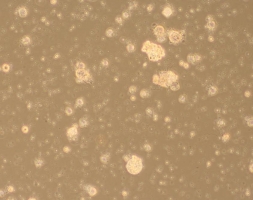

The global trade in amphibians may have helped create and spread a deadly fungal disease, an Imperial study suggests.
Adapted from a news release issued by the Natural Environment Research Council. Photo: Matthew Fisher
Monday 7 November 2011
The global trade in frogs, toads and other amphibians may have accidentally helped create and spread the deadly fungal disease, chytridiomycosis.
See also:
- Natural Environment Research Council
- Department for Environment Food and Rural Affairs
- Biotechnology and Biological Sciences Research Council
- European Research Council
- Institute of Zoology
Related news stories:
Researchers say that unless the trade is regulated, even deadlier strains of the disease may soon emerge, further devastating amphibian populations worldwide.
An international team of scientists, led by Dr Matthew Fisher from the School of Public Health at Imperial College London, found that the trade may have let non-lethal strains of the chytrid fungus from different parts of the world come into contact with each other. This means they’ve exchanged genes in a process called recombination, creating a new and lethal strain which has decimated frog populations around the world in recent years.
“It’s likely that the amphibian trade has allowed different populations of the fungus to come into contact with each other, allowing recombination to occur,” said Rhys Farrer from Imperial College London and the Institute of Zoology, lead author of the study, published in Proceedings of the National Academy of Sciences. “This has created a hypervirulent strain leading to losses in amphibian biodiversity.”
The chytrid fungus, Batrachochytrium dendrobatidis (Bd), infects the skin of amphibians like frogs, toads, salamanders and newts. The disease has caused many amphibian populations around the world to decline and over 200 species are suspected to have become extinct as a result of it. In Central America alone, chytridiomycosis has led to the loss of up to 40 per cent of wild amphibians including the Panamanian golden frog.
Despite much research on the disease, scientists have struggled to figure out where it came from or explain how it spread. The problem is even more puzzling because some amphibians coexist alongside Bd with no sign of disease.
“This strongly suggests there may be more than one type of strain of chytrid fungus,” said Farrer.

The chytrid fungus under the microscope. Image: Matthew Fisher
He and his colleagues sequenced and compared Bd genomes from 20 disease samples isolated from 11 amphibian species worldwide to find out more about the fungus’s ancestry.
They found three different strains. One of these, the global panzootic lineage (GPL), has made its way to at least five continents and has caused infections in North America, Central America, the Caribbean, Australia and Europe.
The researchers found evidence of gene exchange in this lineage, which turned out to be the deadliest of the three strains. In one example, a captive breeding and reintroduction program to boost numbers of the endangered Mallorcan midwife toad may have helped Bd spread from captive African clawed frogs to the toads. The fact that they found three strains in just 20 samples also suggests Bd is much more diverse than previously thought.
“What’s interesting is that they’re not all causing disease,” said Dr Fisher. “Only one lineage is a killer, and it has evolved very recently." Scientists had until now thought there was just one strain of Bd.
Farrer, Fisher and their colleagues also found that the start of the decline of amphibians around the 1970s coincides with the emergence of the amphibian trade.
“The age of the lethal BdGPL lineage coincides with the start of the amphibian trade in the 20th century, when we started moving many frogs and toads around the world,” Dr Fisher said. “The horse has well and truly bolted, but to halt the further spread of this disease, we really need to increase global biosecurity.”
The study was funded by the Natural Environment Research Council, the UK Department for Environment, Food and Rural Affairs, the Biotechnology and Biological Sciences Research Council and the European Research Council.
Journal reference
RA Farrer et al. ‘Multiple emergences of genetically diverse amphibian-infecting chytrids include a globalised hypervirulent recombinant lineage.’ Proceedings of the National Academy of Sciences, 7 November 2011.
Article text (excluding photos or graphics) available under an Attribution-NonCommercial-ShareAlike Creative Commons license.
Photos and graphics subject to third party copyright used with permission or © Imperial College London.





